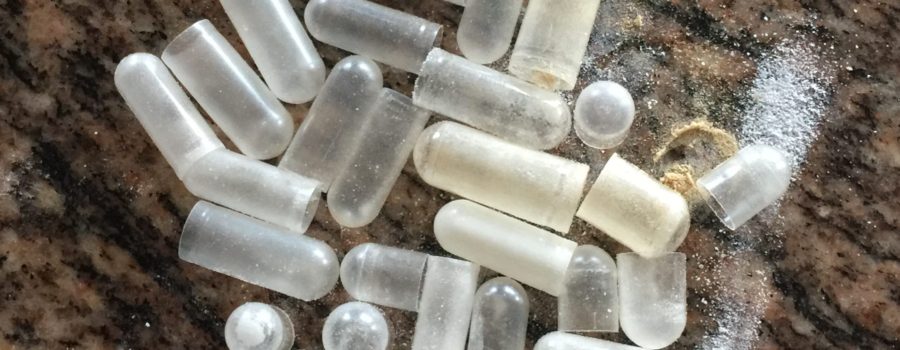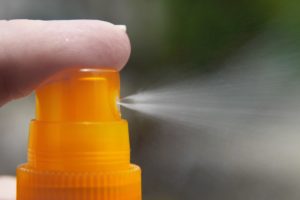Vegetable Capsules
The topic I get asked a lot of questions about, has to do with an article I wrote a while ago, discussing the capsules that we take as supplements or medications. For many of us these may seem more appealing compared to the tablets, that can somewhat dissolve in our saliva and yield an unpleasant, bitter taste. One myth I’m trying to break is about the “vegetable capsules.”
The hard-shelled capsules, as you’ll see if you check the ingredient lists, can be of two types: gelatin and vegetable. But the so-called “vegetable capsules” usually are not really vegetable, just as good a name for most of them could be “plastic capsules.” Being called vegetable, veggie, vegetarian, and sometimes cellulose capsules, is often misleading for consumers. Although it’s true that one of their components is cellulose, the other is a petroleum derivative.
To get a bit more technical just for clarity, the material for the vegetable capsules it’s a polymer produced by reacting cellulose fibers with propylene oxide—nothing vegan about the latter! The same propylene oxide is used to produce plastic #5, also known as polypropylene!
The substance resulting from reacting cellulose and propylene oxide is called hydroxypropyl methylcellulose (HPMC) or hypromellose. Any of these chemical terms are often included on the ingredient lists, in brackets, next to the terms vegetarian capsules. The denomination for the capsules produced using propylene oxide as “vegetable” is not correct, I think, even if it seems more appealing.
Sometimes, on the ingredient lists there may be more distracting details about the cellulose source (like “pine tree cellulose,” which is better than cotton-derived cellulose fibers, since cotton crops are heavily sprayed with pesticides). Whatever the cellulose source is, it still doesn’t make these capsules non-chemical.
Hypromellose capsules can be plain, but can also contain additional preservatives, artificial colors (many being allergy triggers), sodium lauryl sulfate (SLS), carrageenan, and other excipients. Hypromelloses are incorporated in numerous other tablets, as are other semi-synthetic celluloses. These are also part of the of foods additives.

The gelatin capsules aren’t ideal either. They are produced from the collagen proteins derived from animals’ connective tissues (mostly skins and bones, but other tissues can be used as well). This is probably why gelatin it’s unappealing to many people who are not even vegetarian. It’s surprising to me though, how people who dislike the idea of gelatin still eat the jiggly gelatin-containing desserts.
Gelatin capsules are no strangers to preservatives, additives, artificial colors, and excipients either, but plain ones (gelatin and water), are available. Artificial colors, sodium lauryl sulfate (SLS), and plasticizers can also be added, especially for the prescription medications.
For the gelatin capsules, because of the concern about mad-cow disease, some manufacturers provide certifications that their products are free of BSE (bovine spongiform encephalopathy) or TSE (transmissible spongiform encephalopathy).
Soft gel capsules (sometimes called caplets or liquid gels), are also made from gelatin, but can’t be opened. They are often seen in over-the-counter products, ranging from pain relievers to supplements (vitamins A, D or E, fish oil). As opposed to the hard-shelled capsules that can only be filled with powder, the soft gel ones are used for medications that are oily or pasty. Mixing and homogenizing these is often done using polyethylene glycol (produced from ethylene oxide—my nemesis).
Gellan gum capsules are obtained after fermentation of lactose (from whey) or glucose (from corn starch), by a bacteria called Sphingomonas elodea and it’s a carbohydrate our body cannot digest. Beside the possible use in producing capsules, it is also a food additive in bakery products, jams, and candy.
Pullulan capsules are produced from tapioca starch fermented by a fungus (called Aerobasidium pullulans—the black yeast); water and carrageenan gum are added to the recipe. This seems truly a vegetarian capsule. So far, I saw the term “pullulan capsule” listed only on one label for a brand of organic cranberry capsules. At this point, since I don’t know enough about these capsules, I personally prefer to stick to the gelatin ones I know.
Most of the dietary supplements in powder form, can be included in either type of hard-shelled capsules, without changing the properties for the active ingredient. If the taste buds allow it, for many products the capsules can be opened and the content sprinkled over food or juice, unless it’s specified otherwise on the label.
Because many consumers, mislead about the name of vegetable capsules prefer these, some manufacturers may unexpectedly change their products. The gelatin capsules are replaced with the “vegetable” ones, which in reality are…..plastic. I had to discover this switch the hard way, with the brand of charcoal capsules I was occasionally taking.
- I ordered clear gelatin capsules from a website that certifies the ingredients are just gelatin and water
- I transfer any powder-form supplement from their vegetable capsule into the plain gelatin ones I bought; to avoid possible additives, I do the same for the supplements in gelatin capsules from unknown manufacturers
- the probiotics I take by opening the capsules and sprinkling their content over cold or room-temperature yogurt, kefir, or juice
- for prescription medications (non extended-release) that come in gelatin capsules (usually with numerous additives), I transfer the powder into the plain gelatin capsules
- as I explained, no soft gel capsules for me: I take the unflavored, sardine tasting fish oil as such, in a teaspoon; I use vitamin D in a drop form and it tastes like the olive oil it’s made of.
If one needs a specific therapy and no other equivalent medication is available, there is not much of a choice. This is unfortunate, especially for daily medications, but for the most part, there are other options. For vitamins and other supplements, decreasing the number of swallowed plastic capsules can be done.
I WANT MORE INFORMATION ABOUT THE ADDITIVES IN OUR FOODS!




